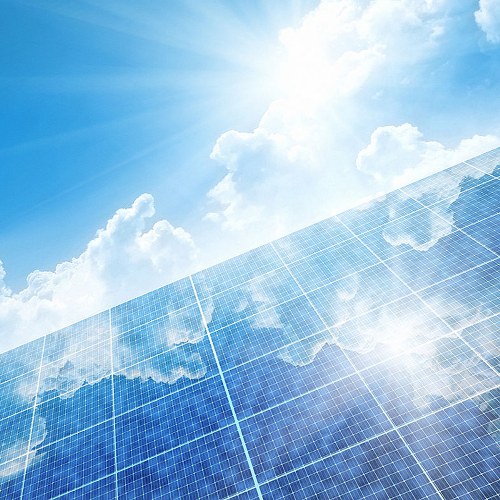 The direct conversion of sunlight into electricity is a very elegant process to generate environmentally friendly, renewable energy. This branch of science is known as "photovoltaics" or "PV". PV technology is modular, operates silently, is therefore suited to a broad range of applications, and can contribute substantially to our future energy needs. Although the basic principles of PV were discovered in the 19th century, it was not before the 1950s and 1960s that solar cells found practical use as electricity generators, a development that came about through early silicon semiconductor technology for electronic applications. Today, a range of PV technologies is available on the market and under development in laboratories. Complete PV systems consist of two elements: Modules (also referred to as panels), which contain solar cells, and the Balance-of-System (BoS). The BoS mainly comprises electronic components, cabling, support structures and, if applicable, electricity storage or optics & sun trackers. The cost of BoS also includes the labour cost of installation.
The direct conversion of sunlight into electricity is a very elegant process to generate environmentally friendly, renewable energy. This branch of science is known as "photovoltaics" or "PV". PV technology is modular, operates silently, is therefore suited to a broad range of applications, and can contribute substantially to our future energy needs. Although the basic principles of PV were discovered in the 19th century, it was not before the 1950s and 1960s that solar cells found practical use as electricity generators, a development that came about through early silicon semiconductor technology for electronic applications. Today, a range of PV technologies is available on the market and under development in laboratories. Complete PV systems consist of two elements: Modules (also referred to as panels), which contain solar cells, and the Balance-of-System (BoS). The BoS mainly comprises electronic components, cabling, support structures and, if applicable, electricity storage or optics & sun trackers. The cost of BoS also includes the labour cost of installation.
In addition, it is worthy of remark to analyse LCC and LCA of various PV technologies. LCC (Life Cycle Cost) of an item consists of the total cost of owning and operating an item over its lifetime. Some costs involved in the owning and operating of an item are incurred at the time of acquisition, and other costs are incurred later. LCA (Life Cycle Assessment) of PV systems is an important tool to quantify the potential environmental advantage of using solar technologies versus more traditional technologies, especially the ones relying on non-renewable fossil fuel sources.
Contents:
Part 1
- PV principles
- Crystalline silicon based technology,
- Types and conversion efficiency of different solar cells architecture
Part 2
- LCC of some PV installations
- Principle of LCC calculation
- Trends and issues: What's Future?


